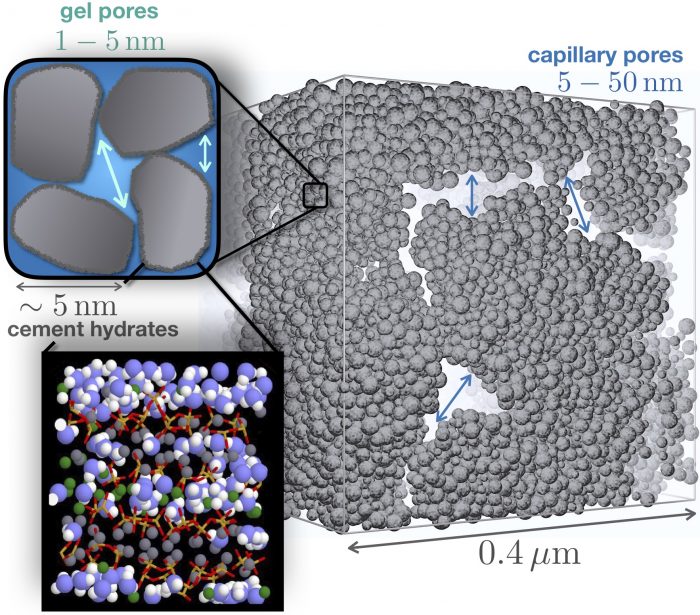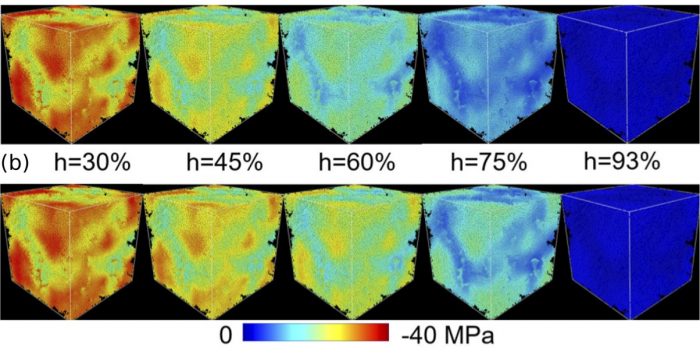Capillary effects in cement paste are associated with multiple degradation mechanisms. Using a framework, we investigated the role of capillary forces in cement paste under partial saturation from the nanograins level to the mesoscale. We proposed a numerical and theoretical framework to address the poromechanical effect of capillary stress in complex mesoporous materials. It exemplified for water and nitrogen sorption in cement. We first predict the capillary condensation/evaporation isotherm using lattice-gas simulations in a realistic nanogranular cement model. A phase-field model to calculate moisture-induced capillary stress is then introduced and applied to cement at different water contents. We show that capillary stress is an effective mechanism for eigenstress relaxation in granular heterogeneous porous media, which contributes to the durability of cement.We show that the largest capillary forces concentrate at the boundary between gel pores and larger capillary pores, inducing nonaffine deformations with correlations up to a few tens of nanometers. Our results suggest a homogenization length scale common to liquid and solid stresses correlated with the scale of inherent structural heterogeneities. This opens the route to studying the poromechanics of complex multiscale media with explicit fluid–solid coupling.
https://www.pnas.org/content/116/22/10652
https://pubs.acs.org/doi/full/10.1021/acs.langmuir.8b03400
Interested in a video presentation on this research topic?

